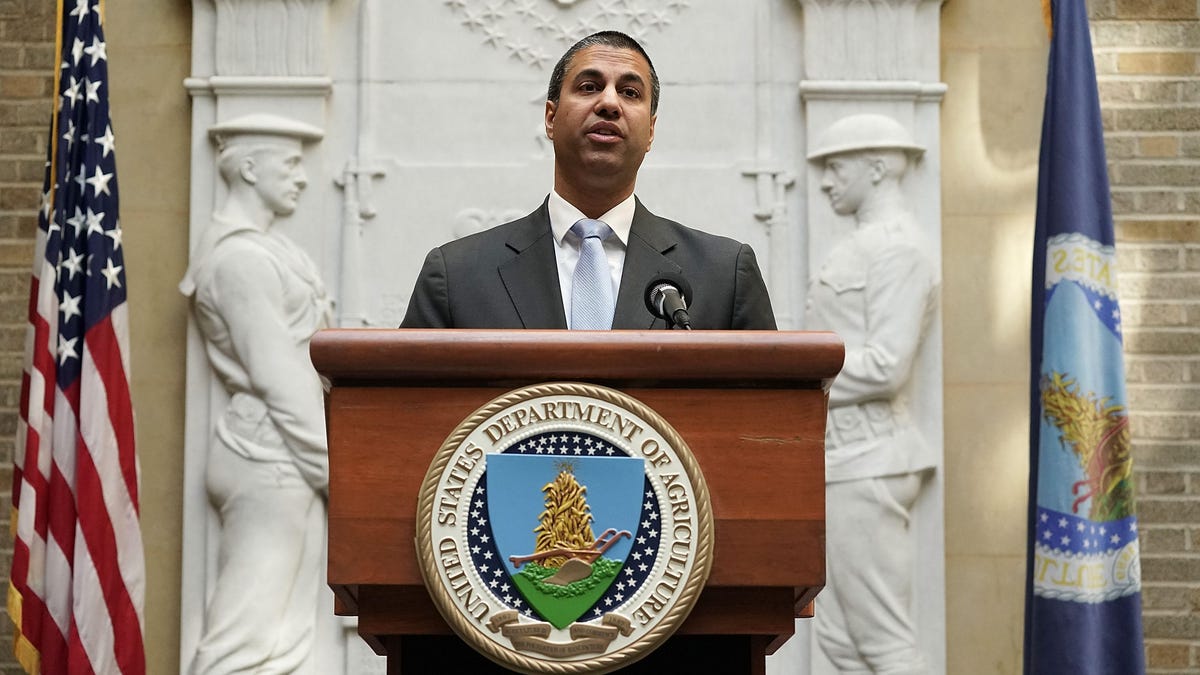FCC kicks off investigation into broadband map accuracy
A preliminary review suggests the commission's rules may have been violated.

Federal Communications Commission Chairman Ajit Pai
The federal government keeps a map that highlights areas that have or don't have broadband service. Critics say this national broadband map doesn't accurately reflect the level of access in the US.
Now, the Federal Communications Commission is going to act on this. On Friday, Chairman Ajit Pai said his agency will investigate if carrier companies have submitted incorrect coverage maps or violated the rules of a rural broadband auction that would have distributed funds to build out service in underserved areas.
Pai's decision comes after the FCC reviewed internet speed test data required for participation in Mobility Fund Phase II, the agency said in a press release, referring to a fund that will allocate as much as $4.53 billion over the next decade to improve internet service in rural areas. To participate, service providers must submit internet coverage maps of rural areas. If the maps aren't aren't accurate, participation in the initiative could be jeopardized.
"A preliminary review of speed test data submitted through the challenge process suggested significant violations of the Commission's rules," said Pai. "That's why I've ordered an investigation into these matters. We must ensure that the data is accurate before we can proceed."
The investigation hints at a broader problem with the FCC's broadband map, which Pai and Democratic FCC Commissioner Jessica Rosenworcel both agree largely misstates where internet exists in the US. A big part of the problem is that the FCC relies on private companies to report where they offer service, information the agency doesn't verify. Another problem: Wireless providers are only required to report advertised maximum speeds, not actual speeds.
More than half of Americans in rural areas find it difficult to access fast internet in their communities, according to a Pew Research Center report in September. Trouble accessing high-speed internet cuts across economic divides in rural parts of the country, meaning fast internet is difficult to get regardless of household income or education background.
The FCC has been trying to fix the rural internet problem. In September, the agency voted to limit how much local governments can charge wireless companies to attach small radios to utility poles when deploying 5G networks. The three Republicans on the FCC said the plan would save wireless providers roughly $2 billion, which could be used to build networks in rural areas. Democrats and some municipalities say the rule strips them of their local authority.
In October, FCC leaders said a "national mission" was needed to fix broadband services in rural areas. Rosenworcel said the agency needed to fix the coverage maps first in order to know exactly "where broadband is and is not in every corner of this country."
CNET's Holiday Gift Guide: The place to find the best tech gifts for 2018.
5G is your next big upgrade: Everything you need to know about the 5G revolution.

